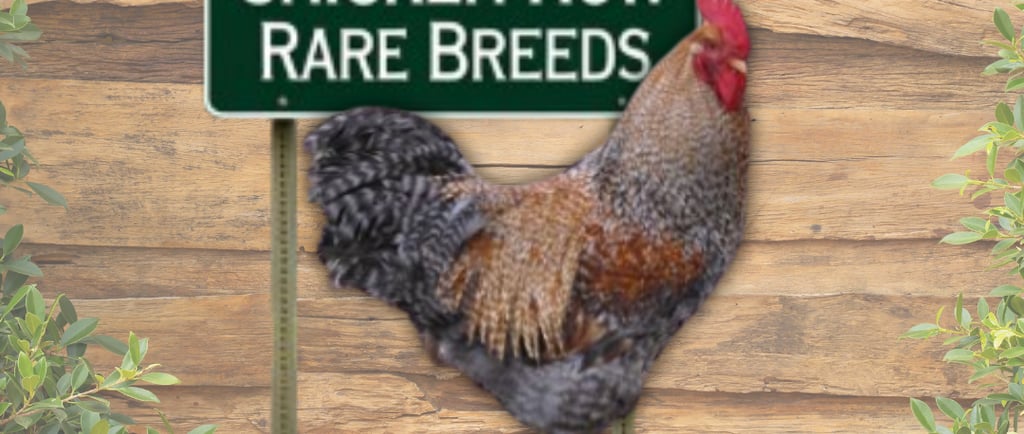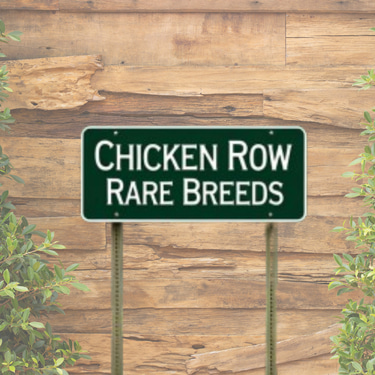Bielefelder - Crele
A rare German heritage breed with auto-sexing plumage and practical purpose
8/22/20252 min read


🐓 Crele Bielefelder: Germany’s Auto-Sexing Dual-Purpose Breed
Big, productive, and beautiful, the Bielefelder Kennhuhn (commonly known as the Crele Bielefelder) is one of Germany’s most impressive modern chicken breeds. Developed in the 1970s, this dual-purpose bird is known for its striking crele plumage, reliable egg production, and a very practical trait — it is auto-sexing, meaning chicks can be sexed at hatch by their feather color.
📜 A Brief History
The Bielefelder was created in the 1970s in Bielefeld, Germany by breeder Gerd Roth, who set out to develop a hardy, productive chicken for both meat and eggs. To achieve this, he crossbred Malines, Welsumers, and American Barred Rocks.
The breed was first exhibited in 1976 under the name Deutsche Kennhuhn. In 1980, after official recognition by the Bund Deutscher Rassegeflügelzüchter, it was renamed the Bielefelder Kennhuhn.
Unlike many heritage breeds, the Bielefelder has never been considered at risk. Both the FAO and German conservation groups list it as “not endangered.”
📌 Breed Snapshot
Status: Not at risk (Heritage Conservation Priority List)
Use: Dual-purpose (meat and eggs)
Egg Production: 200–230 eggs per year
Egg Size & Color: Large; brown
Weight: Roosters 6.5–9 lbs (3–4 kg); Hens 5.5–7 lbs (2.5–3.25 kg)
Temperament: Calm, easy to manage
Characteristics: Crele plumage, auto-sexing, hardy, large-bodied
🐓 Why Choose a Crele Bielefelder?
Auto-Sexing Chicks
Bielefelder chicks hatch with feather patterns that make it easy to tell males and females apart immediately — a huge advantage for breeders and backyard keepers alike.
Reliable Egg Layers
Hens lay around 230 large brown eggs per year, making them excellent producers. Their eggs average about 60 grams each, bigger than most heritage breeds.
Dual-Purpose Value
Crele Bielefelders grow quickly and produce a solid carcass for meat while maintaining strong egg production.
Hardy & Calm
They are easygoing, cold-hardy birds, making them an excellent choice for families, homesteads, or small farms looking for dependable chickens.
🛠️ Care Considerations
Space Needs – Bielefelders are large-framed birds, so they need roomy coops and secure runs.
Cold Hardy – Bred in northern Germany, they thrive in colder climates.
Feed Efficiency – As a fast-growing dual-purpose breed, they benefit from a protein-rich diet.
Not APA Recognized (U.S.) – The breed is well known in Europe but not yet officially recognized by the American Poultry Association.
🧬 Appearance at a Glance
Plumage
Crele (kennsperber): A barred/cuckoo pattern with black-breasted red coloring
Size
Roosters: 3–4 kg (6.5–9 lbs)
Hens: 2.5–3.25 kg (5.5–7 lbs)
Eggs
Large, brown, up to 230 per year
Bantam Version
Roosters: 1.3 kg
Hens: 1.1 kg
Eggs: ~160 medium brown per year
🧡 Heritage and Conservation
The Crele Bielefelder is a modern heritage breed that has already built a strong reputation for productivity, hardiness, and practicality. It is not considered endangered, and both standard and bantam forms are bred successfully across Europe and beyond.
🧠 Final Thoughts
The Crele Bielefelder stands out as one of the best modern dual-purpose chickens. With its beautiful crele plumage, calm temperament, auto-sexing chicks, and impressive egg production, it checks all the boxes for backyard keepers and small farms.
If you’re looking for a breed that offers both utility and beauty, the Crele Bielefelder is a smart and reliable choice.
Did You Know?
Bielefelder chicks are sexed at hatch based on their down color — a trait few breeds share.
They were first shown in 1976 and recognized officially in 1980.
Unlike many heritage breeds, the Bielefelder is considered “not at risk” and continues to thrive today.
